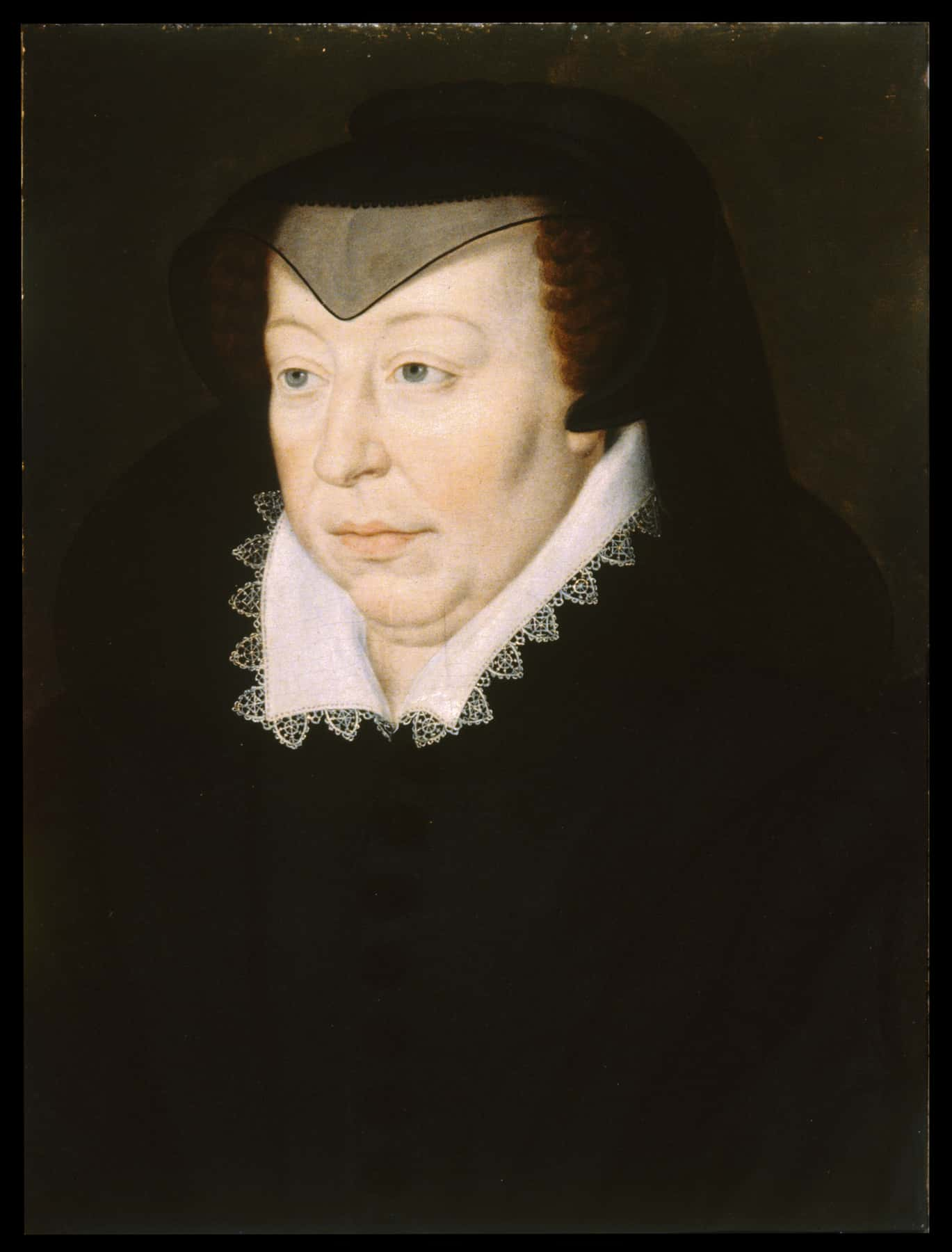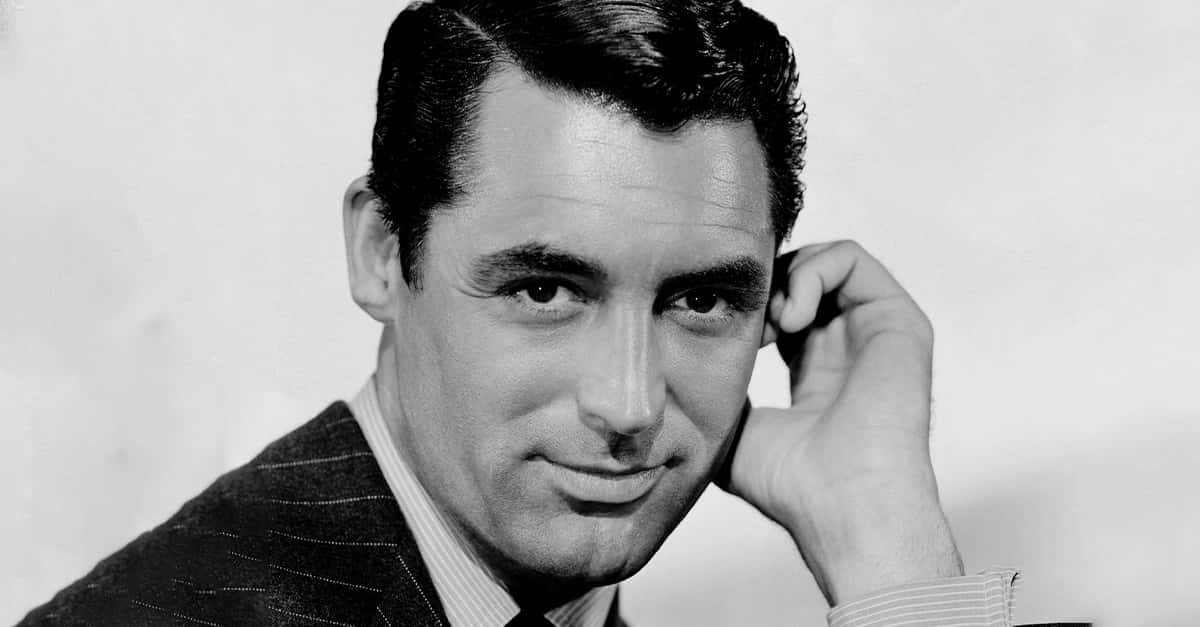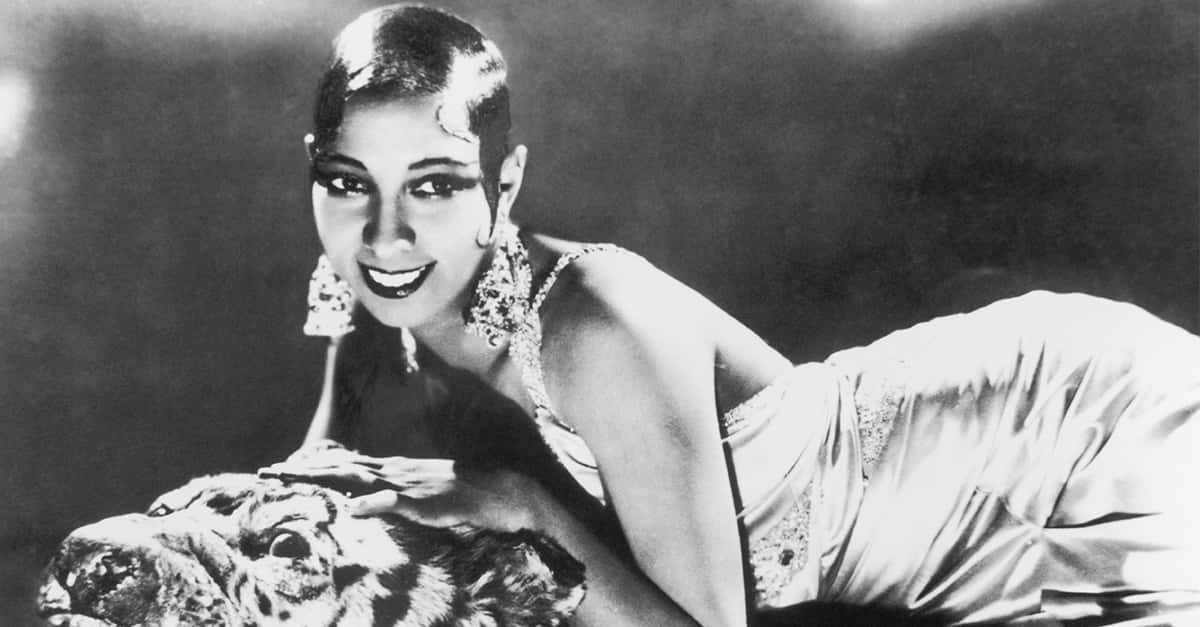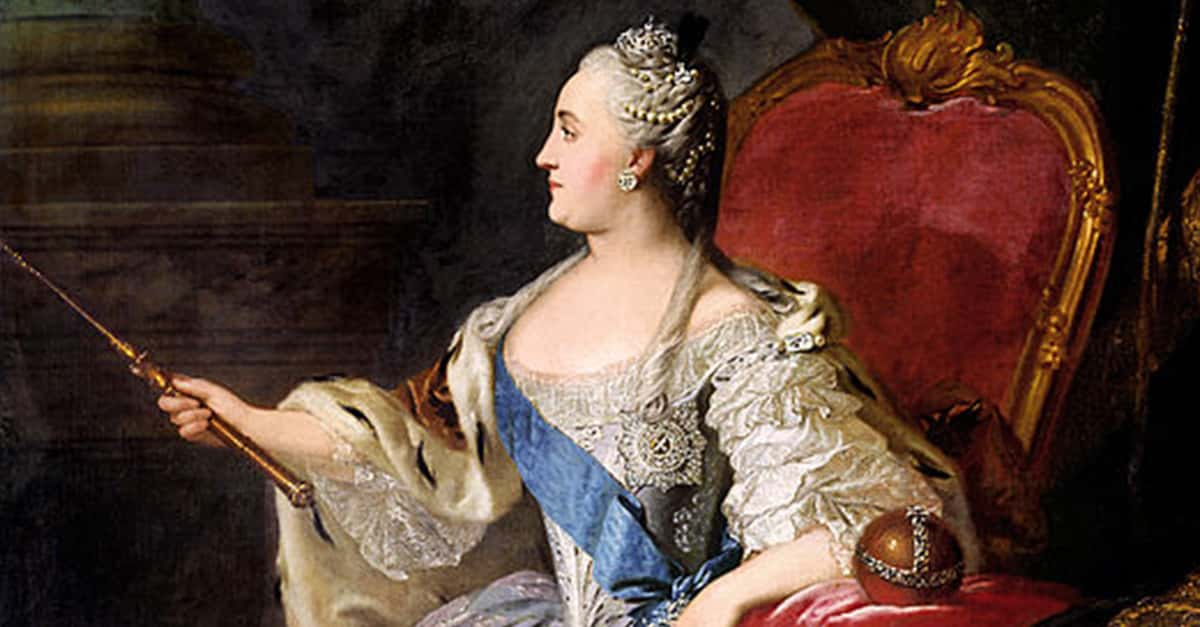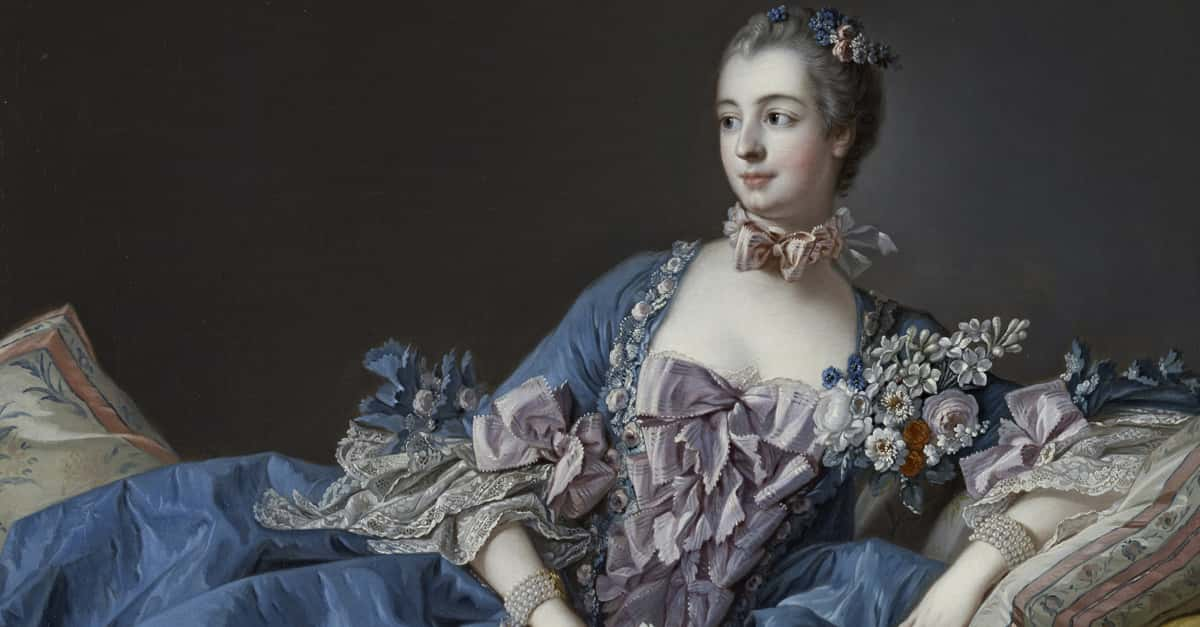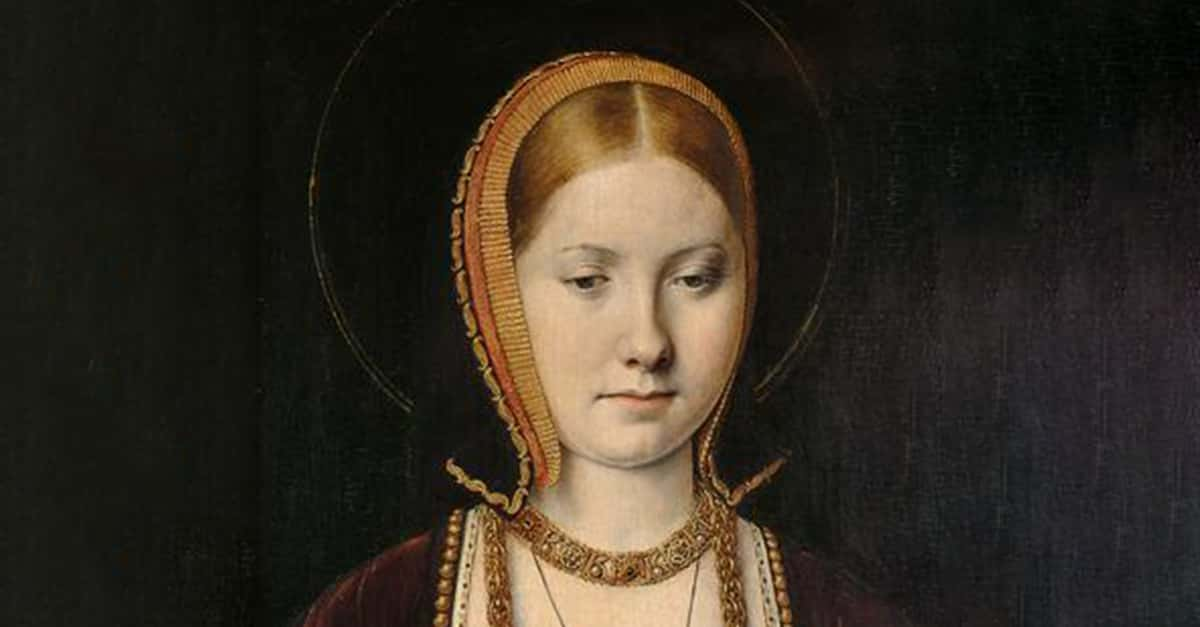Gene Hackman is an acting legend—but his time in Hollywood was full of scandal, feuds, and bitter drama, right up until his tragic end.
1. He Was A Tough Guy
Gene Hackman never seemed like your typical leading man, and he wasn't. The rugged Hackman had to claw his way up the Hollywood ladder with tooth and nail—and his bitterness and anger about this were the driving forces behind many of his legendary successes.
But this also meant that Hackman’s iconic roles and personal life were full of behind-the-scenes explosions.

Factinate Video of the Day
2. There’s One Childhood Moment He Never Forgot
Gene Hackman’s hard-knock roots went all the way back to his childhood—when his father dealt him a horrific betrayal. After years of roughly mistreating the family, Hackman’s father walked out on them entirely when the actor was 13.
Hackman later described the “hurt and disappointment” he felt watching his father give him a leisurely wave from the car as he drove off forever. Hackman would eventually turn that pain into art, but the road to get there had even bigger bumps.
 Michael Ochs Archives, Getty Images
Michael Ochs Archives, Getty Images
3. He Was A Bad Kid
For the next few years, Hackman turned more and more into a “bad kid”. His one pleasure was going to the movies with his mother, but the rest of his life was utterly painful. Belligerent and angry, he never got along well with authority figures, and even slept in a cell one night after lifting candy and a soda from a store.
When his turning point came, it wasn’t a good one. Warner Bros., Bonnie and Clyde (1967)
Warner Bros., Bonnie and Clyde (1967)
4. He Had A Fatal Flaw
When Hackman was just 16, the restless teenager joined up with the Marines. It turned into a disastrous idea. He was still rebellious and looking for any fight he could get into, and his superiors despised him. More than that, a terrifying, high-speed motorcycle accident in the early 1950s left him with a broken leg and a discharge notice from active duty.
Hackman was now 22, out of the Marines, and more lost than ever. But then he made a move that would eventually make him famous.
 Columbia Pictures, Marooned (1969)
Columbia Pictures, Marooned (1969)
5. He Demeaned Himself
With nowhere left to turn, Hackman remembered all those times with his mother in the cinema, and decided to head to New York and try to make it as an actor. Only he had a horrible time of it, and had to make ends meet in a series of demeaning jobs. His personal low was when he worked in the Chrysler Building on the nightshift polishing executives’ leather armchairs.
You might think this was his rock bottom—but no. That was just around the corner. Cervin Robinson, Wikimedia Commons
Cervin Robinson, Wikimedia Commons
6. An Old Rival Put Him Down
One day in 1955, Hackman was grinding away at yet another day job, working as a doorman at the Times Square hotel. It happened to be a painful date with destiny. Who should walk past him but one of his old Marine drill instructors—one who had no love lost for his former troubled student.
Reportedly, without even looking at Hackman, the sergeant muttered “Hackman, you’re a sorry son of a—” within the struggling actor’s earshot. But this cruel insult had a strange effect on him. Michael Ochs Archives, Getty Images
Michael Ochs Archives, Getty Images
7. He Used His Disappointments As Fuel
Gene Hackman had spent his entire life crawling his way up from the bottom, and he had learned a thing or two in that time about how to use his frustration. So although Hackman later told David Letterman he was “so embarrassed” both by the sergeant’s put-down and the crummy job his old superior had found him in, he considered it “psychological warfare” to succeed despite everyone telling him he couldn’t.
It took one more push to truly put him on that path. NBC, Late Night with David Letterman (1982–1993)
NBC, Late Night with David Letterman (1982–1993)
8. His Wife Changed His Life
During this time, Hackman had been dating a woman named Faye Maltese, and she seemed to be one of the only people who did believe in him. After they married in 1956, later having three children, Maltese convinced Hackman to enrol in acting school at Pasadena Playhouse.
In some ways, this was a great idea. In others…it was a horrible one.
 JuanKenobi, CC BY-SA 3.0, Wikimedia Commons
JuanKenobi, CC BY-SA 3.0, Wikimedia Commons
9. He Didn’t Get Along With People
If Hackman thought that acting school was going to be a way to re-invent himself, he’d never been so wrong in his life. Now 26, he was significantly older than the 19-year-olds who became his new classmates, and while they were, in his words, “walking surfboards,” he had the face and demeanor of “your everyday mine worker”.
In other words, he was right back to being the odd man out. But that wasn’t all. Santi Visalli, Getty Images
Santi Visalli, Getty Images

History's most fascinating stories and darkest secrets, delivered to your inbox daily.
10. He Was A Flunky
It wasn’t just that Hackman didn’t get along with his peers—he ran into bigger trouble with his teachers. Never one for authority, he also clashed with the instructors, and they in turn mocked and put him down any way they could.
One told him he wouldn’t “amount to anything,” and at the end of his tenure he incredibly got the lowest grade the Pasadena Playhouse had yet given. There was, however, one person he did get along with in school—a soon-to-be very famous person. Herbert Dorfman, Getty Images
Herbert Dorfman, Getty Images
11. He Had A Famous Friend
Hackman was firmly an outcast, but he did befriend an awkward 19-year-old who the rest of the class hated too: Dustin Hoffman. At the time, Hoffman was in full beatnik mode, and often wore a suede vest with sandals. They made an odd pair, and spent most of their breaks playing bongos together on the roof.
Before they graduated, they’d both earned the monikers “Least Likely to Succeed” from their classmates. Well, Hackman just went out and proved them wrong again. Gorup de Besanez, CC BY-SA 3.0 , via Wikimedia Commons
Gorup de Besanez, CC BY-SA 3.0 , via Wikimedia Commons
12. He Had A Breakout Role
By 1961, Hackman was starting to work in bit parts on film, and then his big break came at long last. In 1967, he played Buck Barrow in the hit Bonnie and Clyde, alongside big-name leads Warren Beatty and Faye Dunaway.
It nabbed him an Academy Award nomination for Best Supporting actor, and for the first time in his life, people were beginning to recognize Hackman on the street. Yet his fame came with a heartbreakingly high price.
 Warner Bros., Bonnie and Clyde (1967)
Warner Bros., Bonnie and Clyde (1967)
13. He Got Terrible News
Just as Hackman was making a name for himself, karma came along and told him not to get too comfortable. In 1962, right when he became a working actor and just five years before he made it big in Bonnie and Clyde, his mother passed. More than that, she tragically perished after her lit cigarette set her home aflame.
Hackman was in tatters, dealing with her loss and with the fact that his inspiration for acting wasn’t around to see him finally succeed. This pain made his behavior even stranger. Warner Bros., Bonnie and Clyde (1967)
Warner Bros., Bonnie and Clyde (1967)
14. He Went Method
Right after he left the Pasadena Playhouse, Hackman had gotten into method acting, and he now took his interest to new depths. In his 30s, he would often walk around New York City and all but stalk people, watching and trying to imitate their every mannerism.
But when his next iconic acting gig came up, it was a violent thriller—and Hackman’s disappearance into the part was utterly disturbing. Warner Bros., Bonnie and Clyde (1967)
Warner Bros., Bonnie and Clyde (1967)
15. He Was In A Famous Car Chase
In 1971’s The French Connection, Hackman famously plays the rough-and-tumble officer Popeye Doyle, who is intent on making the bust of his career. The film contains one of the most well-known car chase scenes of all time and gave Hackman an Oscar for Best Actor. But behind the scenes, the film was a nightmare from the very beginning. Twentieth Century Fox , The French Connection (1971)
Twentieth Century Fox , The French Connection (1971)
16. He Was Last Choice
For one thing, the director of the film, William Friedkin, was extremely opposed to casting Hackman in the lead role. Rather than get Hackman on board, Friedkin had asked quite literally every other tough-guy actor he could—Paul Newman, Steve McQueen, Charles Bronson, we could truly go on—before finally settling for Hackman. “Settling” being the operative word.
You’d think, then, that Hackman walked on set grateful for the opportunity. Nope. Twentieth Century Fox , The French Connection (1971)
Twentieth Century Fox , The French Connection (1971)
17. He Hated The Violence Of The Film
Hackman was in the know about how little Friedkin wanted him in The French Connection—he later joked he was “at least seventh choice” for Popeye Doyle—and this only seemed to make him more surly on set. The film was so violent, and required so many brawls from Popeye, that Hackman apparently told Friedkin that “he should consider replacing me”.
But Hackman didn't get better.  Twentieth Century Fox , The French Connection (1971)
Twentieth Century Fox , The French Connection (1971)
18. Marlon Brando Threatened Him
Even when he was on top, Hackman couldn’t shake the idea that he was second fiddle—and this almost became a self-fulfilling prophecy. When he made The Conversation with Francis Ford Coppola in 1974, one of his favorite pieces of work, he found out Coppola had wanted Marlon Brando first.
Instead of accepting that everybody wants Brando first, Hackman let it fuel his performance with barely bottled frustration, and it took him to another incredible performance. But this negative engine he ran on was bound to explode sometime. The Directors Company, The Conversation (1974)
The Directors Company, The Conversation (1974)
19. He Squandered His Money
Even though Hackman was one of the most recognizable actors in Hollywood now, he still didn’t have a hold on his fame—and a self-destructive streak began to rear its ugly head. He blew through a mountain of money in the 1970s and early 1980s, spending it on private planes, fancy cars, and other frivolities. It ended in a dire situation. The Directors Company, The Conversation (1974)
The Directors Company, The Conversation (1974)
20. He Was In A String Of Flops
This period of Hackman’s life is full of films he’d rather have forgotten, including flicks like the flop The Poseidon Adventure. But he was so broke, he needed any job he could take, and had even resorted to driving his daughter’s junky car to get to interviews, having no other option available.
Sadly, worse was coming for him.
 Twentieth Century Fox, The Poseidon Adventure (1972)
Twentieth Century Fox, The Poseidon Adventure (1972)
21. He Lost A Friend In A Heartbreaking Way
In 1981, at the peak of his spending issues, Hackman received devastating news. His best friend Norman Garey fatally shot himself, leaving Hackman—already something of a loner—with even less of a support network. Unfortunately, just when he needed stability the most, life threw him another cruel curve ball. Twentieth Century Fox, The Poseidon Adventure (1972)
Twentieth Century Fox, The Poseidon Adventure (1972)
22. His Marriage Crashed And Burned
Just five years after Garey’s tragic passing, another of Hackman’s long-term relationships crumbled. His marriage to Faye Maltese had been faltering for a while, and in 1986 they finally called it quits after 30 years together. Hackman was so down, he confessed he almost stopped acting entirely.
Little did he know, his golden age was about to hit. ullstein bild Dtl., Getty Images
ullstein bild Dtl., Getty Images
23. He Made A Stunning Comeback
Not many actors could come back from that kind of rock bottom, but not many actors had Gene Hackman’s steeliness. In 1988, he starred alongside Willem Dafoe as an FBI agent in the civil rights crime thriller Mississippi Burning, which got him nominated for yet another Best Actor Oscar.
Hackman was back on top—but his time on this set was fraught in a new way.
 Orion Pictures, Mississippi Burning (1988)
Orion Pictures, Mississippi Burning (1988)
24. He Kept Himself Hidden
Hackman had always been an intensely private person, but for Mississippi Burning—a weighty and difficult role—he retreated almost completely into himself. One of his co-stars, Frances McDormand, said that during the script read-throughs for the film, Hackman “had an amazing capacity for not giving away any part of himself”.
So far, that mostly included his private life, which he kept locked tight. But people were about to find out a scandalous detail. Orion Pictures, Mississippi Burning (1988)
Orion Pictures, Mississippi Burning (1988)
25. He Had A Much-Younger Wife
In 1991, a rare leak came out about Gene Hackman: He was in love again, and getting married. His new bride was Betsy Arakawa, a concert pianist who was more than 30 years his junior. They would be together for decades, until their recent tragic deaths we will delve into.
Hackman’s love life might have finally settled down, but he still had a lot of growing up to do.  Bart Sherkow, Shutterstock
Bart Sherkow, Shutterstock
26. Clint Eastwood Called Him Up
By 1992, Hackman had fully settled into his “legend” period. So when Clint Eastwood called him up and asked him to play the violent Sherriff Daggett in his new revisionist western Unforgiven, it looked like another slam dunk. Only, soon after Hackman walked on set and met his co-stars, he came to a realization that made his blood boil. Warner Bros., Unforgiven (1992)
Warner Bros., Unforgiven (1992)
27. He Received A Bitter Snub
One of Hackman’s co-stars on Unforgiven was Richard Harris, who played a man Hackman brutally beats in one scene. A scene like that requires a lot of trust from both actors—but Hackman was furious at Harris from the start.
The two of them had already worked together decades ago in the 1966 film Hawaii. But while Hackman remembered Harris well, he could tell Harris didn't remember him, and it was enough to make him snap. Warner Bros., Unforgiven (1992)
Warner Bros., Unforgiven (1992)
28. He Took His Anger Out On His Co-Star
In the terrifying scene in Unforgiven where Hackman is wailing on Richard Harris, he went a little too method. Hackman later admitted that for the scene, he concentrated all his anger over Harris’s snub into his movements. As he said, “I remember thinking, ‘Oh, I can use this'. I just took that disappointment and did this kind of transference”.
Not the kind of inspiration you probably want your co-star to take.  Warner Bros., Unforgiven (1992)
Warner Bros., Unforgiven (1992)
29. Wes Anderson Wanted Him
Alan Parker, who directed Hackman in Mississippi Burning, once said that “Every director has a short list of actors he’d die to work with, and I’ll bet Gene’s on every one”. This was certainly the case when Wes Anderson began to write 2001’s The Royal Tenenbaums.
When coming up with the dysfunctional family’s patriarch, Anderson wrote the part specifically with Hackman in mind. But when he reached out to Hackman to do the film, Anderson got the shock of his life.
30. He Rejected His Most Famous Part
Anderson was a buzzy director at the time, and other big names like Anjelica Huston had already signed on for the film. But Hackman’s response was angry. He not only said “Absolutely not,” he got offended at the very idea that Anderson would custom-write a part for him, since that meant Anderson thought he knew Hackman.
Yet there might have been a more heartbreaking reason for his rejection. Touchstone Pictures, The Royal Tenenbaums (2001)
Touchstone Pictures, The Royal Tenenbaums (2001)
31. He Was Scared For His Family
In a New York Times interview later on, Hackman confessed that his initial reluctance to take on the part of Royal was because he did resemble the character, and he was ashamed of it. He said that he had treated his ex-wife Faye Maltese and even their children with a similar disdain as the Tenenbaum father, and didn’t want them getting upset when they watched the movie.
Or, that’s what he said. Anderson had yet another explanation. Touchstone Pictures, The Royal Tenenbaums (2001)
Touchstone Pictures, The Royal Tenenbaums (2001)
32. He Had Selfish Reasons
Wes Anderson claimed a lot of Hackman's reluctance actually came down to one thing: Cash. Because of the star-studded cast, everyone on the film was working at a lower salary, and Hackman would have to swallow a pay cut, too. This more than anything may have informed his first rejections of the role.
But when it came to stubbornness, Hackman was about to meet his match. Touchstone Pictures, The Royal Tenenbaums (2001)
Touchstone Pictures, The Royal Tenenbaums (2001)
33. He Finally Gave In
Of course, we all know that Gene Hackman eventually did join the Royal Tenenbaums, mostly because—even after considering replacements such as Michael Caine and Gene Wilder—Wes Anderson wouldn’t give up on having Hackman in his film. As Anderson admitted, “I just kept bothering him. I wore him down”.
Finally, Hackman agreed to the part. It was a decision everyone would come to regret. Bart Sherkow, Shutterstock
Bart Sherkow, Shutterstock
34. He Was Brutal On Set
Hackman may have agreed to star in The Royal Tenenbaums, but he never forgot that Anderson had all but forced him into it. His reaction was disastrous for the film set. Hackman arrived on location with an enormous chip on his shoulder, and proceeded to brutally cut down Anderson any way he could, calling him horrible names in front of the rest of the cast. And that wasn’t all. Touchstone Pictures, The Royal Tenenbaums (2001)
Touchstone Pictures, The Royal Tenenbaums (2001)
35. He Insulted His Director
As a man who had spent his formative years roughing it, Hackman prized his masculinity. So he really didn’t take well to Anderson, who was more of a dandy figure, ordering him around on set—even if it was Anderson's job as director. Instead of swallowing it, Hackman resorted to infantilizing Anderson.
As Anjelica Huston recalled later in front of Anderson, “He told you to pull up your pants and act like a man”. It got so bad, one of the actors took drastic measures. Denis Makarenko, Shutterstock
Denis Makarenko, Shutterstock
36. His Co-Stars Stepped In
Bill Murray, another of the film’s stars and a long-time collaborator with Wes Anderson, couldn’t stand to see Hackman treat the director like that. Reportedly, Murray was so protective that he would come to set even on his days off to supervise Hackman and make sure things didn’t get too out of hand. Except, they did get out of hand.
 Touchstone Pictures, The Royal Tenenbaums (2001)
Touchstone Pictures, The Royal Tenenbaums (2001)
37. He Disdained Luke Wilson
According to reports from The Royal Tenenbaums set, Hackman's main issue wasn't with Wes Anderson, but with his co-star Luke Wilson. More specifically, Luke Wilson’s enormous crush on Gwyneth Paltrow, who plays his love interest in the film.
Wilson was so head over heels for Paltrow, he would consistently flub his lines if he was opposite her. This infuriated Hackman, who could hit his lines perfectly within a minute, but who then had to constantly redo them with the lovestruck Wilson.  Touchstone Pictures, The Royal Tenenbaums (2001)
Touchstone Pictures, The Royal Tenenbaums (2001)
38. Anjelica Huston Slapped Him
Hackman was reportedly worse to the men on the set than he was to the women, but that didn’t mean he didn’t stir up trouble with the actresses around him. Anjelica Huston, a legend in her own right, recalled that their first scene was one where she had to slap Hackman—an act she probably relished a little too much.
As she said, “I hit him a really good one. I saw the imprint of my hand on his cheek and I thought, he’s going to kill me”.
Even so, many consider The Royal Tenenbaums to be one of Hackman's best performances in a long line of iconic roles. But little did anyone know, it would also be one of Hackman’s last.  Touchstone Pictures, The Royal Tenenbaums (2001)
Touchstone Pictures, The Royal Tenenbaums (2001)
39. He Retired Soon After
After the The Royal Tenenbaums, Hackman starred in just two other movies—Runaway Jury alongside his old friend Dustin Hoffman, and Welcome to Mooseport. After that, he went on Larry King in 2004 and told the host he believed his career was over. He never did work in a major picture again.
But if Hackman was done with Hollywood drama, Hollywood drama was not done with him. New Regency Productions, Runaway Jury (2003)
New Regency Productions, Runaway Jury (2003)
40. He Got Into An Accident
Hackman’s burning spirit was seemingly impossible to quench, and he continued to get into trouble well into his 70s. In December 2001, right around the time he was making The Royal Tenenbaums, Hackman got into a small traffic accident in West Hollywood with another man.
But this being Gene Hackman, he had to take “small traffic accident” and turn it into “big scandal”.
 Featureflash Photo Agency, Shutterstock
Featureflash Photo Agency, Shutterstock
41. He Beat Up A Man In The Street
After getting into the accident, Hackman escalated the situation to a new level. He said after, with much bravado, “He brushed against me and I popped him”. Soon, the two men were rolling around on the ground until officers showed up on the scene and tore them apart. One of Hackman’s most vivid memories? “I got a couple of good shots in”.
And still, Hackman wasn’t out of the fight. Dave Azoulay, Shutterstock
Dave Azoulay, Shutterstock
42. He Had Serious Surgery
Despite living into his 90s, Hackman had very few health scares before his passing—but one of them came all the way back in 1990, when Hackman was a relative spring chicken at the age of 60. Experiencing heart trouble, he had to undergo an angioplasty, but had been healthy in the next decades.
Except, that is, when he was in the most dangerous situation of his life. Featureflash Photo Agency, Shutterstock
Featureflash Photo Agency, Shutterstock
43. He Was A Daredevil
Hackman was always a bit of a daredevil—he got into racing cars in the late 1970s, even once competing in a 24-hour endurance race, and frequently participated in deep-sea diving. In his older age, however, he took up cycling with abandon. One day, this habit almost killed him.  WWD, Getty Images
WWD, Getty Images
44. A Truck Ran Him Over
In 2012, Hackman was 81 years old and still rushing around town in the Florida Keys on his bicycle. That’s when a pick-up truck slammed into the elderly man—and tough-guy Hackman wasn’t even wearing a helmet. The press breathlessly reported that he went to the hospital with “serious” injuries…but there was a twist. Christopher Michael Little, Wikimedia Commons
Christopher Michael Little, Wikimedia Commons
45. He Refused To Stop
Though it certainly sounded like a serious accident, Hackman and his team brushed the whole thing off. His publicist’s statement was more of a handwave, saying, “Gene’s fine. …Just a few bumps and bruises. He is already on his way home”. Hackman also didn’t it let it stop his passion for cycling; you could still catch him cycling around well into his 90s.
 Ron Galella, Ltd., Getty Images
Ron Galella, Ltd., Getty Images
46. He Acted Alongside Another Legend
Most of Gene Hackman’s on-set interactions had an underpinning of menace to them, but not all of them. In Scarecrow, a 1973 road movie, Hackman had a grand old time with his co-star Al Pacino, probably because he was acting opposite someone he actually respected.
That said, it probably helped that Pacino was a method actor too…and they got into some shenanigans. Warner Bros., Scarecrow (1973)
Warner Bros., Scarecrow (1973)
47. He Got Deep Into Character
In Scarecrow, Pacino and Hackman played vagrants, and to get into the roles the two famous actors wandered the streets of San Francisco in character. At one point, Hackman and Pacino met a homeless man on the street and asked him for directions as their characters.
Afterward, they thanked him. In a hilarious response, the man added, “You’re welcome, Mr Hackman and Mr Pacino,” making it clear he knew exactly who they were. But another time Hackman went method was downright illegal. Warner Bros., Scarecrow (1973)
Warner Bros., Scarecrow (1973)
48. He Hung Out With Officers
While filming The French Connection, director William Friedkin hired some retired officers to hang around set, watch the proceedings, and consult. Hackman and his co-star Roy Scheider also trailed the officers around for a month on patrol, where they were supposed to just watch and learn.
Well, that wasn't Hackman’s style—and it nearly got him into big trouble.
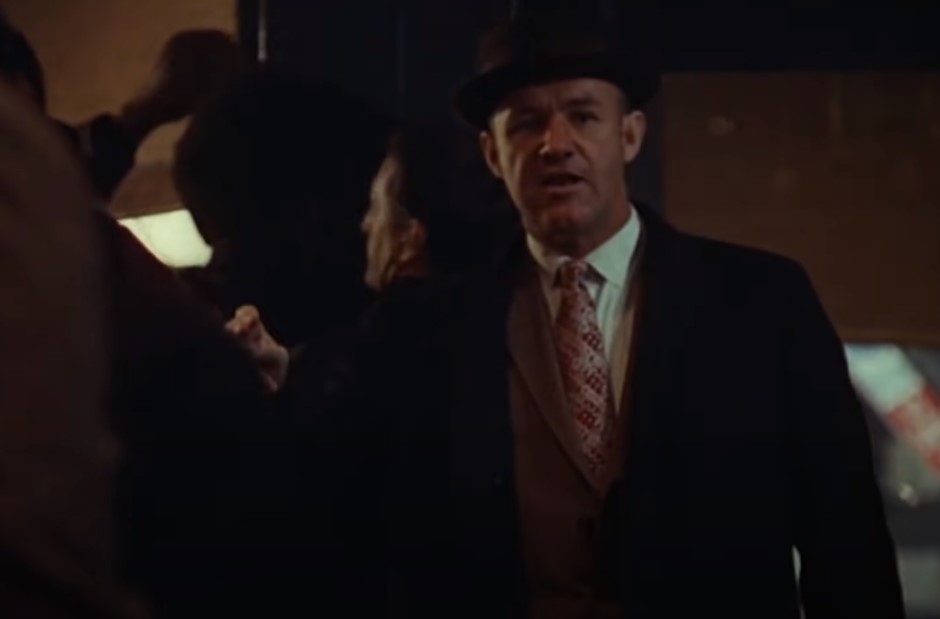 Twentieth Century Fox , The French Connection (1971)
Twentieth Century Fox , The French Connection (1971)
49. He Committed A Crime
After spending some time with the officers, Hackman had a front-row seat to watch them apprehending a particular suspect. That’s when he went off the rails. By now he was so into character as Popeye Doyle, Hackman didn’t think twice before jumping into the action himself, detaining the suspect, and cramming him into a patrol car. All very illegally.
It was so bad, even Hackman worried about getting sued in the aftermath, though nothing came of it. There were more disturbing moments, too.
 Twentieth Century Fox , The French Connection (1971)
Twentieth Century Fox , The French Connection (1971)
50. He Was Addicted To Brawls
If you'll remember, Hackman was vocal about not liking the violence in The French Connection. Perhaps that's because it was a little too close to home for him. Talking about this time in his life, Hackman’s friend revealed a chilling detail about the actor.
Dustin Hoffman claimed that Hackman had a near-compulsion for getting into brawls. As he told it, they would be hanging out and Hackman would sometimes randomly proclaim “I gotta go” before heading down to a bar because “he had to get in a fight”.
True to form, then, Hackman also didn't go gentle into that goodnight.
 Twentieth Century Fox , The French Connection (1971)
Twentieth Century Fox , The French Connection (1971)
51. His Neighbors Worried About Him
On February 26, 2025, a maintenance worker made a fateful call. When no one answered the door, the worker worried about the 95-year-old Hackman and his younger wife Betsy Arakawa, now 64, and called in security, who then called in officers. When they entered the house, they made a disturbing discovery.
 Donaldson Collection, Getty Images
Donaldson Collection, Getty Images
52. He Died Under Mysterious Circumstances
The officers found Gene Hackman's body at the scene. With Hackman at 95 years old, this would have been somewhat expected, but the rest of the details were shocking. Not just Hackman, but also his wife Betsy Arakawa and one of their three dogs were also found dead inside the house. It seemed they had been that way for a while.
As the days passed, more information emerged, though it provided little clarity on what had happened. Hackman and his wife were found in different rooms, with decomposition clear on Arakawa's remains. Pills were also found in their home, and investigations ruled out carbon monoxide poisoning.
The answers to the mystery are devastating.
 Ullstein bild Dtl., Getty Images
Ullstein bild Dtl., Getty Images
53. The Answers Are Heartbreaking
After days of medical and police investigation, officials determined was Arakawa who died first, with officials suspecting she died on or just after February 11. She had become infected with hantavirus pulmonary syndrome—an illness, spread by rats, that causes flu-like symptoms and which can cause fatal respiratory difficulties if left untreated.
Meanwhile, officials determined that Hackman likely died on February 18—the last time his pacemaker had activity—about a week after his wife. His autopsy showed that he had died of heart disease while suffering from late-stage Alzheimer's. Investigators sadly think it was very possible, given his mental condition, that he wasn't aware Arakawa was deceased in the huse.
None of this tragedy, however, can take away from his legacy as one of the greatest actors of his generation—or in Hollywood's history.





